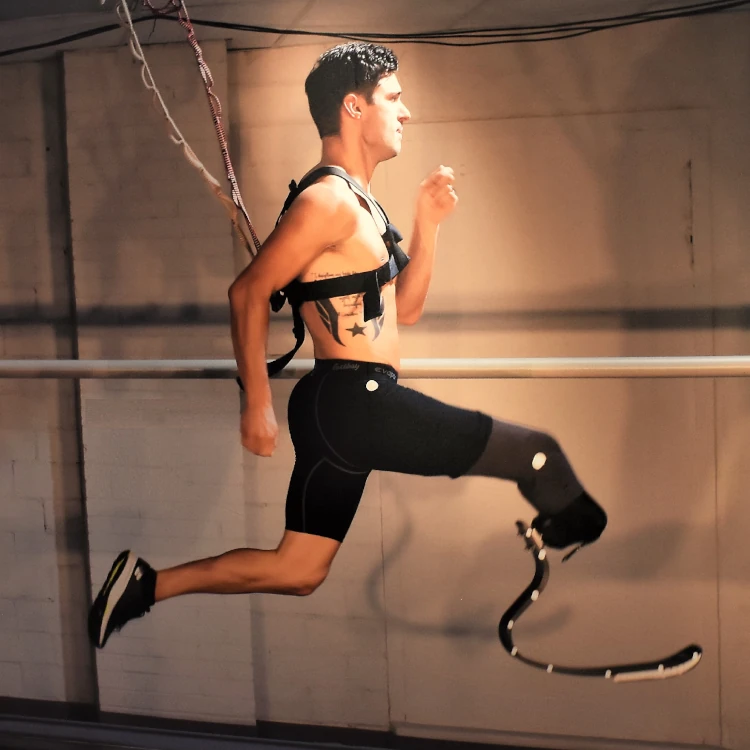
Modern athletes and coaches have vast stores of data available to measure and optimize performance. Depending on the sport, you can call up detailed metrics for stride length, spin rate, launch angle, release time, or almost anything else you can think of. There are benchmarks for acceleration rate among elite midfielders, degrees of arc on the most accurate three-point shots, and inches of break on the nastiest major-league curveballs.
But try finding the average speed of world-class wheelchair rugby players, or the standard takeoff velocity among medal-contending long jumpers in the T64 classification.
“You’re not gonna find those numbers,” says Brandon Kane, associate director of the Lakeshore Foundation, a national leader in adaptive sports training and instruction. “They just don’t exist. So for an athlete who’s trying to make that final push to get to the medal stand, or a coach who’s trying to determine if an athlete is ready to compete at the international level, they don’t have anything to go by. The data’s just not there.”
Not yet, anyway. But Lakeshore’s new Sports Science and High Performance Lab is setting out to fill in the blanks. Launched earlier this year at the organization’s Birmingham, Alabama, headquarters, the Performance Lab has started compiling detailed information about adaptive sports at every skill level, from top-tier competitors to recreational and casual participants.
“We saw a big gap in research and innovation around adaptive performance methods,” says Amy Rauworth, Lakeshore’s chief research and innovation officer. “There are a lot of tipping points out there that could make a a big difference for a lot of athletes, and nobody is really paying attention to them.”
As one of the nation’s pioneering adaptive sports programs, Lakeshore is a logical candidate to break new ground in data utilization. With top-notch facilities and a diverse clientele that includes schoolkids, veterans, seniors, and everyone in between, the organization has strong connections in every corner of the parasports community. Lakeshore has long been an important source of Paralympic talent for Team USA, and it serves as the official training home for two US national para teams (wheelchair rubgy and boccia).
The impetus for the High Performance Lab grew out of a survey of Paralympic-level athletes. “We asked them: ‘What do you need? What are you missing? What do you want?’” Kane says. The answers varied—some people focused on nutrition, others zeroed in on sports psychology, and still others cited training equipment, metabolic research, or even algorithms that can synthesize multiple types of data and generate evidence-based recommendations.
All the athletes’ responses pointed toward a common theme: The lack of advanced training techniques and technologies placed US paraathletes at a slight disadvantage in international competition—and that often made the razor-thin difference between a medal and a near-miss.
Closing those gaps at the upper echelon is one objective of the High Performance Lab, Rauworth says. But the broader goal is to raise the bar for everyday athletes.
“We want to translate what we learn to improve health and well-being for everyone,” she says. “Whether it’s around hydration, rest and recovery, nutrition, psychological factors, or whatever, it’s important that we use the knowledge to benefit the broad community of people with disabilities who want to be physically active.”
To learn more about the Sports Science and High Performance Lab, visit the Lakeshore Foundation online at lakeshore.org.




